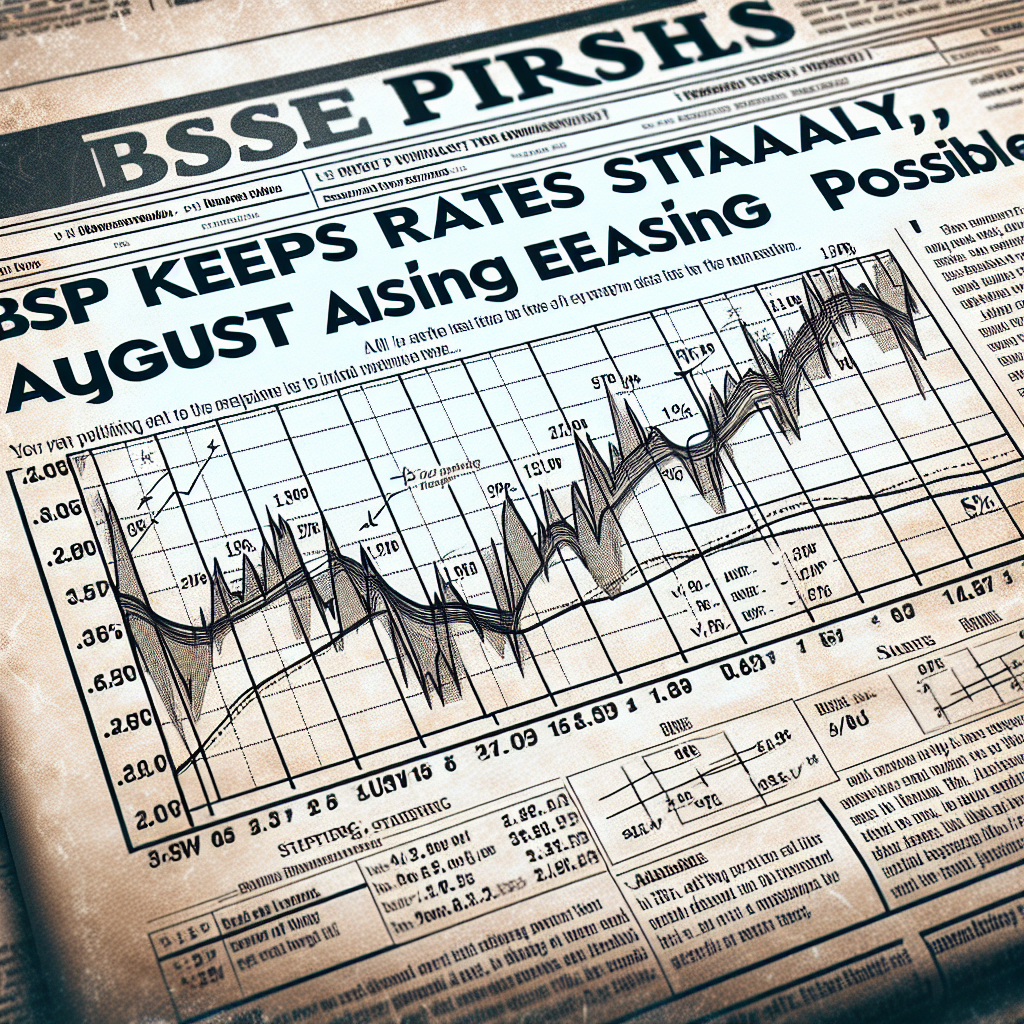The Importance of BSP’s Decision to Keep Rates Steady
The Bangko Sentral ng Pilipinas (BSP) recently announced its decision to keep interest rates steady, maintaining the overnight reverse repurchase rate at 2.25%. This decision comes as no surprise to many analysts, as the central bank aims to support the country’s economic recovery amidst the ongoing COVID-19 pandemic. However, the BSP also hinted at the possibility of easing rates in August, signaling its commitment to providing further stimulus if necessary.
The decision to keep rates steady is of great importance to the Philippine economy. Interest rates play a crucial role in determining borrowing costs for businesses and consumers alike. By keeping rates low, the BSP aims to encourage borrowing and spending, which in turn stimulates economic activity. This is particularly crucial at a time when the country is grappling with the economic fallout of the pandemic.
The BSP’s decision also reflects its assessment of the current economic conditions. While the Philippine economy has shown signs of improvement in recent months, uncertainties still loom large. The threat of new COVID-19 variants and the slow pace of vaccination rollout continue to pose risks to the recovery. By maintaining rates at their current level, the central bank is adopting a cautious approach, ensuring that it has enough ammunition to support the economy if needed.
Furthermore, the BSP’s decision is in line with its inflation target. Inflation in the Philippines has remained within the central bank’s target range of 2-4% for several months now. This stability in prices provides the BSP with the flexibility to keep rates steady and focus on supporting economic growth. However, the central bank remains vigilant, closely monitoring inflationary pressures and adjusting its policy stance accordingly.
The possibility of easing rates in August is an important signal from the BSP. It indicates the central bank’s readiness to provide additional stimulus if economic conditions warrant it. The decision will depend on various factors, including the trajectory of inflation, the pace of economic recovery, and the global economic environment. Should the BSP decide to ease rates, it would provide a further boost to businesses and consumers, potentially spurring investment and consumption.
It is worth noting that the BSP’s decision to keep rates steady does not mean that monetary policy is the only tool at its disposal. The central bank has implemented various measures to support the economy throughout the pandemic, including liquidity injections, regulatory relief, and targeted lending programs. These measures, combined with fiscal support from the government, have helped cushion the impact of the crisis and facilitate the recovery process.
In conclusion, the BSP’s decision to keep rates steady is a significant move that reflects its commitment to supporting the Philippine economy. By maintaining low borrowing costs, the central bank aims to stimulate economic activity and facilitate the country’s recovery from the COVID-19 pandemic. The possibility of easing rates in August further underscores the BSP’s readiness to provide additional stimulus if necessary. As the economy continues to navigate through uncertain times, the central bank’s decisions will play a crucial role in shaping its trajectory.




